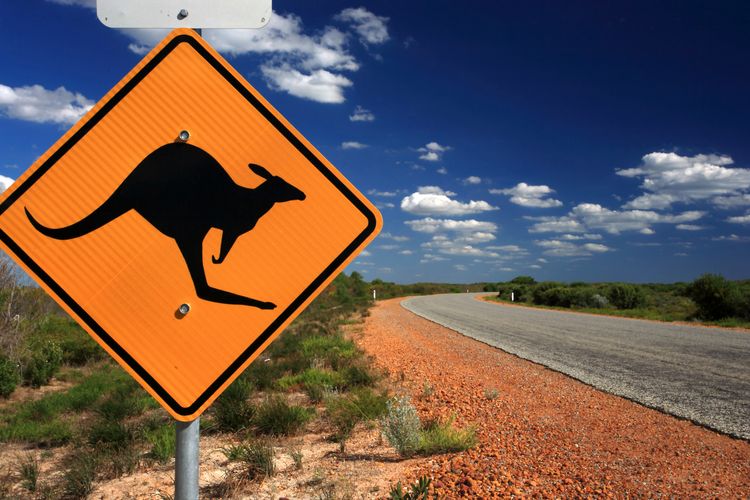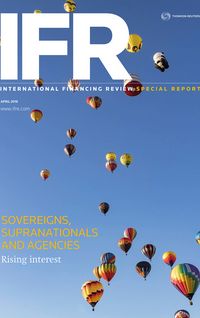After a quiet 2017, offshore Kangaroo issuance has bounced back, with over A$12bn printed so far this year. A traditionally steady market has seen the emergence of new products such as Green and Social bonds, as well as T2 issuance.
The offshore Australian dollar market opened with a bang rather than a whimper this year, with issuers trying to take advantage of a following wind made up of attractive rates and willing investors. There is a distinct sense they are getting things done while the going is good.
“It has been a busy start to the year,” said Rod Everitt, head of Australian dollar bond syndicate at Deutsche Bank in Sydney. “The second half of the year is looking shadowy and we can see more volatility further out. Issuers are saying that they might as well issue now if the market is good.”
Almost A$1bn (US$770m) more has been sold so far this year than in 2017. Against A$11.2bn issuance in the first quarter of last year, by mid-March, this year had already seen A$12.1bn bonds printed, according to Deutsche Bank figures.
The reason is straightforward. The structure of the Kangaroo bond remains attractive. At its heart is the basis swap. The spread measures the level at which Australian dollar interest payments can be swapped for US dollar Libor-based interest payments after adjusting for interest rate differentials. The Australian dollar/US dollar 10-year currency basis swap is currently at the lower end of the 20bp–40bp range, but as one banker put it, “it has been like that in the 10s forever”.
And the stability is as much a part of this as the fundamental dynamics. It is this that makes funding requirements consistent.
“The basis is going to remain within the range and going to remain stable. That is a distinct attraction for offshore borrowers,” the banker said.
So far, so normal. But this is not to say that the market is stuck in the mud. While issuance over the past few years has focused on the five to seven year, tenors in both the offshore and domestic Australian dollar markets are evolving. A distinct theme of this year has been the 10-year and 10.5-year, which between them have made up more than half of issuance.
“Last year, SSA issuance was driven by a chase for yield and it attracted Asian investors who had yield targets,” said Deutsche Bank’s Everitt. “Now, you are seeing life insurance companies in particular looking at duration as well as the yields on offer because they fit their portfolios.”
Canadian connection
Another theme of this year has been a slight change in the SSA issuers themselves. Make no mistake, the familiar names are there in force: Asian Development Bank, Inter-American Development Bank, World Bank and the KfWs, Kommunalbankens and Rentenbanks. But trailing a whiff of maple syrup and general good humour, the issuer story has been one of Canadians hitting the market. So far this year, they have raised getting on for A$1.5bn, according to IFR figures.
In mid-January, Triple A rated Export Development Canada added A$325m to its 2.70% October 2022s and, since then, barely a week has gone by without some Canadian issuance. It was followed a week later by the Province of Alberta, which tapped its 3.60% April 2028s for A$50m and its 3.10% December 2026s for A$55m, increasing the issue sizes to A$360m and A$305m, respectively. Since then, there have been more taps from EDC, as well as a new A$65m from the Province of Manitoba and another tap from Alberta.
“It is the ability to do smaller-cap deals that has attracted the Canadians,” explains one banker. “The A$30m–$50m trades in the 10-year have suited them and their funding requirements”.
The other great change in the offshore Kangaroo market this year is the way that Green and Social bonds have come of age.
The World Bank issued the first green Kangaroo bond in April 2014, with A$300m five year 2019s priced at 98.96 for a reoffer yield of 3.73% via RBC Capital Markets and Westpac. The last couple of years have been ones of growing recognition and acceptance.
But it felt like a new chapter when it was a Green Kangaroo that opened the markets this year. The European Investment Bank sold a A$750m five-year Climate Awareness Bond, the largest SSA Green bond to date in Australian dollars. A sign of how far these bonds have come is that the 2.70% January 2023s priced pretty much flat to the EIB curve, at 99.675 to yield 2.77%.
The demand was there for this bond and the paper went to 29 investors from Asia and Europe, as well as just over a third to Australian investors.
“The team timed their outing perfectly, taking advantage of the first clear window of the year and a strong, performing market,” said Tom Irving, head of Asia syndicate at TD Securities.
The deal certainly highlighted the demand for the green product. A couple of days after the 2023s printed, EIB swooped back in for a A$175m tap of its 3.30% February 2028s. It is worth noting that the A$925m Green bonds issued by the end of the first week of January, was not a million miles from 2017’s total issuance of A$1.1bn.
Green appetite
What has changed? For a start more green funds are being set up.
“There are targeted funds and there is demand for Green bonds in secondary. Even after pricing, within a couple of weeks, the funds come back and ask to buy more,” said one banker, pointing to the continued performance of the paper.
The other change is the growth of responsible investing. “The green element of the issue matches the responsible investment perspective favoured by some of our clients,” said Matthew Raftery at Sydney-based global investment manager AMP Capital.
The success of the EIB’s whopper paved the way for International Finance Corp. At the start of March, it sold its A$300m inaugural Kangaroo Social bond via ANZ, Deutsche Bank and Nomura, part of the IFC’s social bond programme. The 2.70% five-year paper priced at 99.861 to yield 2.73% and was lapped up by more than 15 global institutional investors, including official institutions, pension funds and fund managers.
“Our Social bond creates an attractive alternative for investors seeking Triple A rated impact-investment products,” said IFC vice-president and treasurer Jingdong Hua.
With that kind of a dynamic, no surprise then that bankers are predicting much greater flow as the year continues.
Sing for your supper
But perhaps the most intriguing Kangaroo deal in the first quarter has been from Singapore’s DBS Group. It debuted with an A$750m 10-year non-call five-year Tier 2 issue in early March. It was welcomed and the paper, which had DBS Bank as global coordinator along with NAB as structuring adviser and joint lead manager with CBA and Westpac, priced tightly. The floating-rate notes came in at BBSW plus 158bp after initial guidance of 160bp–165bp area.
“This is the first time DBS has accessed the Australian market for a regulatory capital offering,” said DBS chief financial officer Chng Sok Hui, who explained that the bank was responding to Australian dollar investors and favourable market conditions. The reason for it? To diversify the bank’s investor base, he said.
Bankers in Australia reckon that this is just the first issue of what could be a steady stream going forward. The Australian market has not seen a great deal of Tier 2 deal flow: banks have tended to go elsewhere. But, they say, from an issuer point of view, as banks go through their portfolio and capital structures, Australia becomes relevant. If the size is not huge, it is hard to go to the 144A market. In Australian dollars, it is possible to do a small deal and it can be seen as a good trade. It certainly makes sense.
“It is an easy credit. It offers spread and ticks all of the boxes for investors – it is certainly a good product for Asian investors. I wouldn’t be surprised if we saw a lot more of that,” said one syndicate banker.
It is a comment that is as true for Kangaroo paper in general as it is for specialist structures. The steady demand and the ability to get smaller yet significant size away means that Kangaroo issuance is going to remain a useful tool in every issuer’s back pocket.
To see the digital version of this roundtable, please click here
To purchase printed copies or a PDF of this report, please email gloria.balbastro@tr.com



